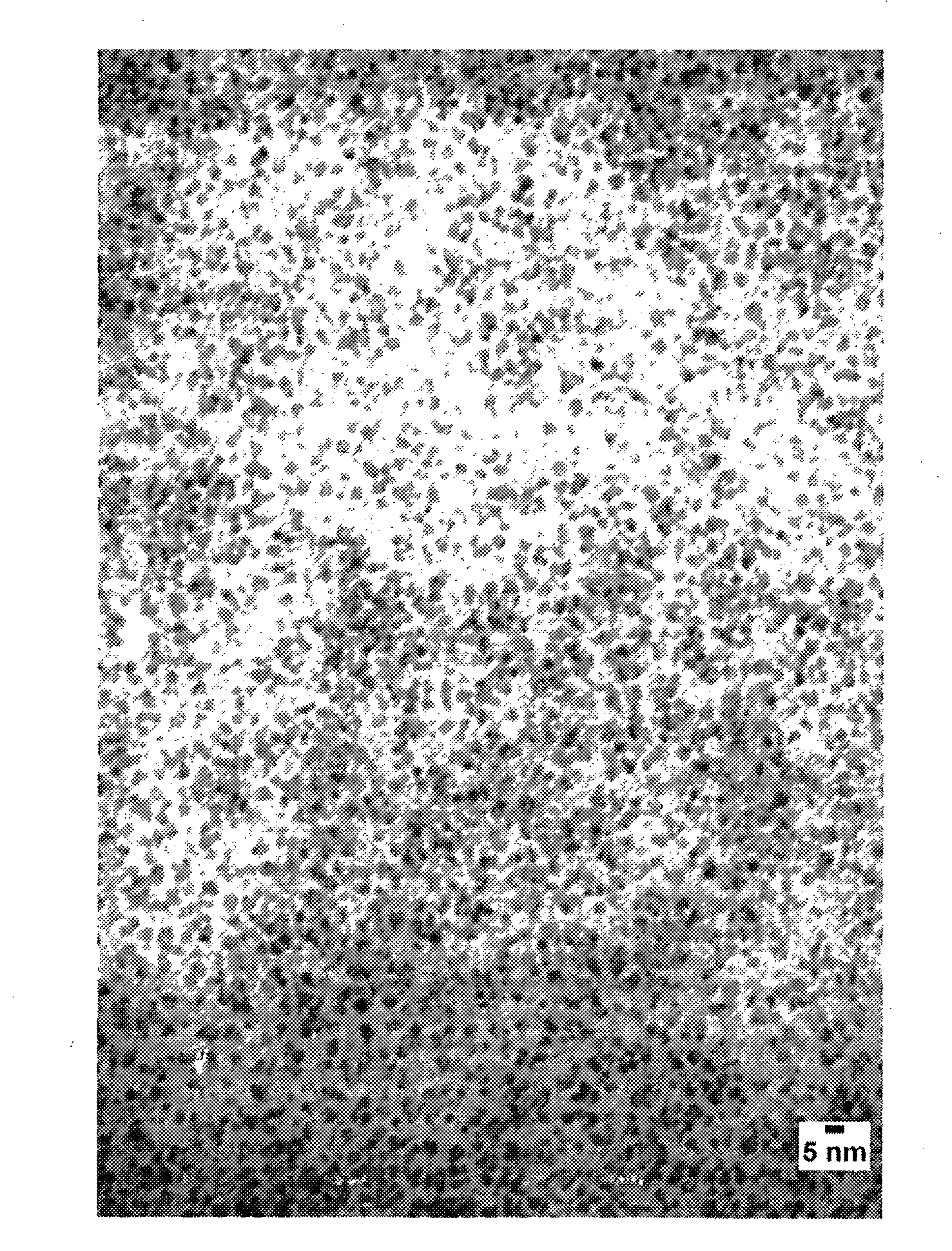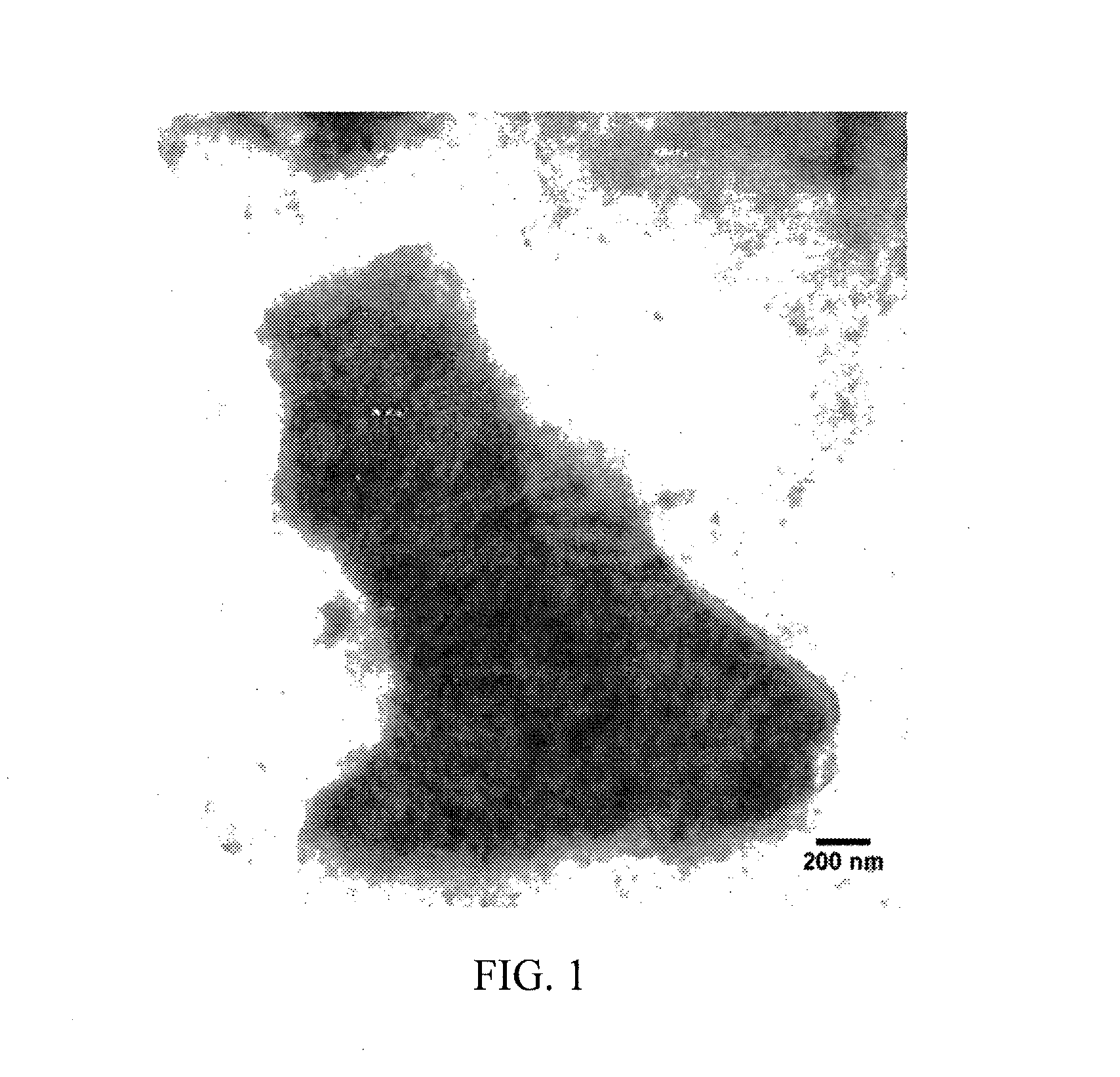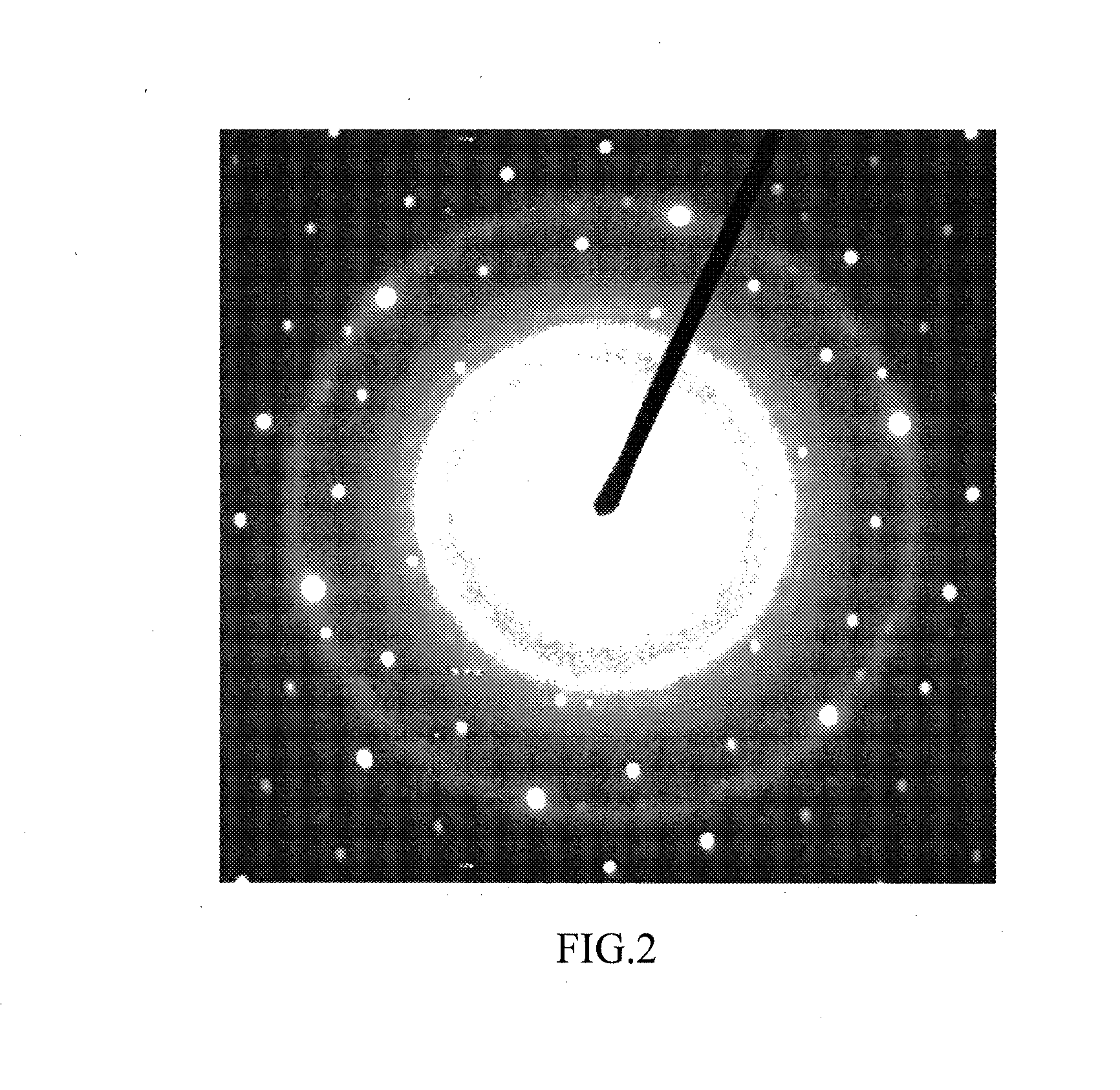Iron oxide nanoparticle dispersions and fuel additives for soot combustion
a technology of iron oxide nanoparticles and fuel additives, which is applied in the direction of fuels, organic compounds/hydrides/coordination complex catalysts, physical/chemical process catalysts, etc., can solve the problems of increasing the back pressure of the exhaust system, reducing engine efficiency, and increasing fuel consumption, so as to reduce carbonaceous soot light-off, reduce total hydrocarbon emissions and particular matter, and reduce the effect of contamination
- Summary
- Abstract
- Description
- Claims
- Application Information
AI Technical Summary
Benefits of technology
Problems solved by technology
Method used
Image
Examples
example 1a
Double Jet Addition with MAA / Iron Ratio of 2.4 (Comparative)
[0102]To a 3 liter round bottom stainless steel reactor vessel was added 1117 grams of distilled water. An impeller (Lightnin® R-100 Rushton style turbine) was lowered into the reactor vessel, and the mixer head was positioned slightly above the bottom of the reactor vessel. The mixer was set to 700 rpm, and the reactor was brought to a temperature of about 70° C. Then 59.8 grams (98%) of methoxyacetic acid was added to the reactor. A double jet addition was conducted over a period of five minutes by pumping a 250 ml solution containing 111.6 grams of Fe(NO3)3.9H2O into the reactor concurrently with a solution containing 69.5 grams (28-30%) of ammonium hydroxide. A distilled water chase into the reactor cleared the reactant lines of residual materials. Then 10.2 grams of 50% non-stabilized hydrogen peroxide was added to the reactor and its contents over a period of 40 seconds. The product of the reaction was a turbid brown ...
example 1b
Double Jet Addition with MAA / Iron Ratio of 2.48 (Comparative)
[0104]To a 600 ml Erlenmeyer flask containing a one inch magnetic stir bar, 8.13 grams of (98%) methoxyacetic acid (MAA) and 130 ml of distilled water were introduced. The flask was then placed into a water bath at a temperature of about 65° C. with constant bar stirring. A metal salt solution containing 7.35 grams of iron (III) nitrate nonahydrate, 98% Fe(NO3)3.9H2O, dissolved in 10 grams distilled water (total solution volume of 10-11 ml), was drawn into a syringe pump and then subsequently pumped at a rate of 3 ml / minute into the MAA containing flask. Concurrent with the start of the iron salt solution addition, an aliquot of about 10 ml of concentrated (28-30%) ammonium hydroxide was pumped into the reaction vessel at a rate of 1.5 ml / minute. The actual amount of ammonium hydroxide to be delivered is dependent on the desired pH of the reaction. Ammonium hydroxide was added until a pH of 4.5 was achieved at which time t...
PUM
| Property | Measurement | Unit |
|---|---|---|
| temperature | aaaaa | aaaaa |
| molar ratio | aaaaa | aaaaa |
| ignition temperature | aaaaa | aaaaa |
Abstract
Description
Claims
Application Information
 Login to View More
Login to View More - R&D
- Intellectual Property
- Life Sciences
- Materials
- Tech Scout
- Unparalleled Data Quality
- Higher Quality Content
- 60% Fewer Hallucinations
Browse by: Latest US Patents, China's latest patents, Technical Efficacy Thesaurus, Application Domain, Technology Topic, Popular Technical Reports.
© 2025 PatSnap. All rights reserved.Legal|Privacy policy|Modern Slavery Act Transparency Statement|Sitemap|About US| Contact US: help@patsnap.com



